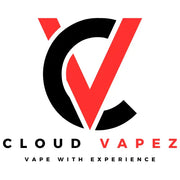In recent years, vaping has rapidly grown in popularity, becoming a mainstream alternative to traditional smoking. Since its inception, the technology and market have evolved significantly, offering a wide and interesting range of devices and e-liquids.
This blog post dives into the origins of vaping, the culture of vaping and future trends, providing an overview for both vaping enthusiasts and newcomers.
The Origins of Vaping
Late 2000s to Early 2010s:
The concept of vaping can be traced back to the early 1960s when Herbert A. Gilbert patented a "smokeless non-tobacco cigarette," but didn't gain the traction it needed. However, the invention of the first e-cigarette was made in the early 2000s by Chinese pharmacist Hon Lik. Seeking a safer alternative to smoking.
In 2003, Hon Lik developed the first successful electronic cigarette. His design included a battery-powered heating element that vaporised a nicotine-laced liquid solution, creating a vapour that could be inhaled. This invention was different from previous attempts at creating smokeless cigarettes because it effectively mimicked the act of smoking without combustion.
Hon Lik's work has made a significant contribution to the development of alternatives to traditional smoking, influencing both consumer habits and regulatory policies.
The Rise of Vape Culture
Mid-2010s:
E-cigarettes entered Western markets around 2007. Early adopters were primarily smokers looking for a less harmful alternative. These devices mimicked the look and feel of traditional cigarettes, often called "cigalikes."
Online forums and YouTube channels began discussing vaping techniques, products, and
experiences which started to lead vaping changing from its original purpose. Vape shops emerged as community hubs, where enthusiasts could share experiences and knowledge.
Matching the high demand of consumers who wanted improved vapes / flavours, the market saw a significant expansion in e-liquid flavours, ranging from traditional tobacco and menthol to fruits, desserts, and beverages and the option for custom made flavours also became available!
Vaping became more mainstream, with a notable increase in the number of users, including former smokers and new users attracted to the diverse flavours and perceived lower harm.
Late 2010s to Present:
The late 2010s witnessed a surge in the popularity of disposable vapes, driven by innovations in nicotine salt technology. This advancement allowed for higher nicotine concentrations without the harsh throat hit typically associated with traditional freebase nicotine.
Disposable vapes took the market by storm due to their ease of use and enhanced flavouring.
Initially, they were more affordable than reusable devices, making them appealing to beginners and casual users. At one point, the market for disposable vapes became so huge that vape stores across the UK would open without even stocking traditional vape kits, instead filling their shelves with disposable options.
However, over time, consumers found that the costs of disposable vapes could add up, making them more expensive than refillable options for regular users. Environmental concerns also
increased due to improper battery disposal. As a result, the market saw a shift, with about half of consumers moving back to pod kit vapes. These offer the same flavours and nicotine hit at a fraction of the price.
While many vape consumers disagree with disposable vapes due to the significant culture change they have brought to the industry—transforming vape stores from "community hubs" to quick-sale convenience outlets—there is one thing everyone can agree on: the convenience of disposable vaping is unmatched.
The Future of Vaping
The future of vaping looks promising, with ongoing technological innovations and market growth. Trends such as increased customisation, enhanced features, and new e-liquid combinations are expected to continue.
However, the industry also faces challenges, including regulatory pressures and public health concerns. These pressures may change the whole vaping culture all over again! - A separate blog post on this topic is on its way!
Conclusion
Vaping has come a long way since its invention, evolving through significant technological advancements and cultural shifts. As the industry continues to grow and innovate, it remains essential for consumers to stay informed about trends and developments.
By exploring the latest products and staying updated on regulatory changes, enthusiasts can enjoy a safe and enjoyable vaping experience.


